Venue: The Howard Theatre
Downing College
Regent Street
Cambridge CB2 1DQ
The Optics for the Cloud series features leading researchers giving public talks on cutting-edge topics…
Ultrafast Laser Writing of Integrated Waveguides Toward Quantum Sources
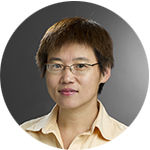 Jie Qiao, Associate Professor, Rochester Institute of Technology
Jie Qiao, Associate Professor, Rochester Institute of Technology
Thursday, 20 February 2020
16:00–19:15 | Followed by refreshments
Abstract
The research on ultrafast-laser-based photonics fabrication and integration is highly interdisciplinary, intersecting applied physics, photonics, lasers, materials, and imaging. The talk presents methods, computational models, physical processes, and diagnostics related to using ultrafast lasers to fabricate integrated photonic devices, including direct writing of waveguides and waveguide lasers, polishing and micro-joining of optical components. Simulations using unidirectional beam propagation equations and fabrication of low-loss waveguides and waveguide lasers in a crystal material will be presented. Waveguide lasers suitable for quantum sources can be potentially achieved through integration of the presented technologies. A pump-probe microscope used for measuring the dynamics of the femtosecond laser interaction process and a new optical differentiation wavefront sensing technique based on far-field spatial modulation using a binary pixelated filter will also be presented.
Biography
Jie Qiao is an Associate Professor in the Center for Imaging Science at the Rochester Institute of Technology. She leads the Advanced Optical Fabrication, Instrumentation & Metrology Laboratory where her team works on ultrafast-laser-based photonics / optics fabrication, wavefront sensing and adaptive control. Prior to joining RIT, Dr. Qiao worked on technology innovations for various photonics devices, optical imaging and ultrafast laser systems for photonic startups and the Department-of-Energy-funded Laboratory for Laser Energetics (University of Rochester). Qiao earned her Ph.D. in Electrical and Computer Engineering from the University of Texas at Austin and her M.B.A from the Simon Graduate School of Business, University of Rochester.
Adaptive laser fabrication for future photonic technologies
 Dr. Patrick Salter, EPSRC Early Career Fellow, University of Oxford
Dr. Patrick Salter, EPSRC Early Career Fellow, University of Oxford
Thursday, 20 February 2020
16:00–19:15 | Followed by refreshments
Abstract
In this talk I will discuss ultrashort pulse laser machining, which offers multi-functional 3D fabrication inside transparent materials and promises to be a disruptive manufacturing method for a range of future technologies. In particular, I will concentrate on the use of adaptive optics in the laser processing to enhance resolution, efficiency and throughput. As an example application, I will look at laser fabrication in the bulk of synthetic diamond for the creation of embedded electrical wires, optical waveguides and defects for quantum technology.
Biography
Patrick is an EPSRC Early Career Fellow in Manufacturing the Future at the Department of Engineering Science, University of Oxford. With a background in soft matter physics focused on liquid crystal display technology, his research now mainly concerns optical fabrication using ultrashort pulse lasers, employing adaptive optics techniques to improve resolution and throughput. He is also a research fellow at New College, Oxford and in 2017 co-founded the advanced laser processing company Opsydia.
Photonic-chip-based soliton microcombs
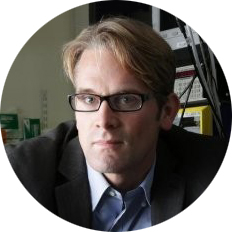 Tobias Kippenberg, Full Professor École Polytechnique Fédérale de Lausanne
Tobias Kippenberg, Full Professor École Polytechnique Fédérale de Lausanne
Friday, 22 November 2019
13:30–15:00 | Followed by refreshments
Abstract
Optical frequency combs provide equidistant markers in the IR, visible and UV and have become a pivotal tool for frequency metrology and are the underlying principle of optical atomic clocks, but are also finding use in other areas, such as broadband spectroscopy or low noise microwave generation. In 2007 a new method to generate optical combs was discovered based on high-Q optical microresonators. Such microresonator frequency combs (microcombs) have since then emerged as a new and widely investigated method in which combs can be generated via parametric frequency conversion of a continuous wave laser inside a high Q resonator via the Kerr nonlinearity. Over the past years a detailed understanding of the comb formation process has been gained, and regimes identified in which dissipative temporal solitons (DKS) can be generated, that not only provide low noise optical frequency combs but moreover give access to femtosecond pulses. Such DKS have unlocked the full potential of soliton micro-combs by providing access to fully coherent and broadband combs and soliton broadening effects that we will describe. DKS have now been generated in a wide variety of resonators, including those compatible with photonic integration based on silicon nitride (Si3N4). However, in this platform, DKS have been only generated with repetition rates above 100 GHz, beyond the spectral bands targeted for easy signal processing by regular optoelectronic components. This was mainly due to the high optical loss in waveguides caused by the fabrication process when fabricating large geometries. In addition, the required pump power to generate the combs have been typically detrimental to the applications requiring full integration. We will discuss the recent progress achieved in the power requirements, form factor and microwave rate operation of the integrated microcombs. In particular, we will report on the Photonic Damascene nanofabrication process that allows fabrication of large waveguides without stitching errors, hereby providing exquisite Q-factor beyond 2×107. This allowed the generation of microcombs operating in the K- and X- microwave bands that are used e.g. in radars and future 5G systems, with power threshold compatible with silicon-based integrated lasers. Moreover, the latest advances in the integration of the chip-scale lasers and nonlinear microresonators have led to an impressive demonstration of integrated, low-power consumption microcombs that make these devices valid candidates for replacing the state-of-the-art of mode-locked laser-based optical frequency combs and truly provide ubiquitous chip-scale comb sources.
Biography
Tobias Kippenberg joined EPFL (CH) in 2008 from the Max Planck Institute of Quantum Optics (MPQ) in Garching (DE). At EPFL, he has been Full Professor in the Institute of Physics and Electrical Engineering since 2013. While at MPQ he demonstrated radiation pressure cooling of optical micro-resonators, and developed ways of cooling, measuring and manipulating mechanical oscillators in the quantum regime that are now part of the research field of cavity quantum optomechanics. His group also discovered the generation of optical frequency combs using high Q micro-resonators, a principle known now as micro-combs or Kerr combs. For his contributions to these research fields, he received the EFTF Award for Young Scientists (2011), the Helmholtz Prize in Metrology (2009), the EPS Fresnel Prize (2009), an ICO Award (2014), the Swiss Latsis Prize (2015), the Klung Wilhelmy Science Award in Physics (2015) and the ZEISS Research Award (2018). Tobias was one of the top 1% most highly-cited physicists, 2014-2018. He is also the founder of LIGENTEC SA, an integrated photonics foundry in Switzerland.
Advanced polarized light microscopy for mapping molecular orientation
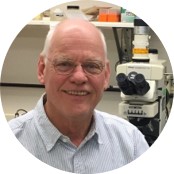 Prof Rudolf Oldenbourg, Senior Scientist Marine Biological Laboratory, MA
Prof Rudolf Oldenbourg, Senior Scientist Marine Biological Laboratory, MA
Tuesday, 24 September 2019 | video
09:30–11:00 | Followed by refreshments
Abstract
Polarization is a basic property of light, but the human eye is not sensitive to it. Therefore, we don’t have an intuitive understanding of polarization-dependent phenomena. However, polarized light plays an important role in nature, and polarization microscopy can be used to understand molecular order in living cells, tissues, and whole organisms. The talk will describe a polarized light microscope, developed at the Marine Biological Laboratory (MBL) in Massachusetts, called the LC-PolScope. This instrument measures the orientation of molecules at every resolved specimen point simultaneously. In addition to birefringence and diattenuation, it can also map the polarized fluorescence of fluorophores used to label structures like cell membranes and filaments. Recently, these techniques have been extended to multi-view microscopes. With a single-view microscope, measuring the inclination angles of the optical axes of bonds, particles, and fluorophores with respect to the focal plane remains a challenge. Multi-view microscopes record images along several viewing directions, thereby enabling unambiguous measurement of the three-dimensional orientation of molecules and their aggregates.
Biography
Rudolf Oldenbourg is a Senior Scientist at the MBL. He was born in Munich, from whose Technical University he graduated in 1976. He received a Max Planck Fellowship for graduate work in Grenoble, and a PhD in physics in 1981 from the University of Konstanz. In 1984, Oldenbourg joined the faculty at Brandeis University in the US, and in 1989 he transferred to the MBL to begin a collaboration with Shinya Inoué which led to important advances in polarized light microscopy techniques for studying living cells.
Antennas for light and their applications in classical optics
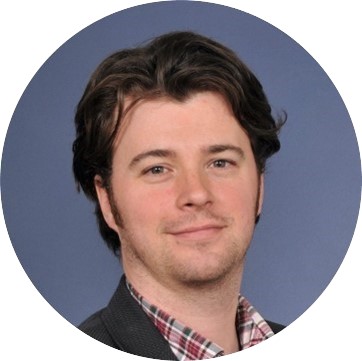 Dr. Rupert Oulton, Reader in Physics Imperial College London
Dr. Rupert Oulton, Reader in Physics Imperial College London
Thursday, 18 July 2019 | video
16:00–17:30 | Followed by refreshments
Abstract
Gold particles with dimensions of about a hundred nanometres are resonant at visible wavelengths and thus serve as antennas for light. Over the past two decades, nanofabrication technology has advanced to the point where a wide range of applications for optical antennas are now possible. Individually, they may be exploited for sensing at the sensitivity of single molecules. Within arrays, they can be deployed to realise thin and planar optical elements, such as lenses and polarisers. The talk will address some contemporary themes in this diverse field, and their applications in classical optics. Each example highlights a key advantage of optical antennas: for example, using their nanometric scale to quantify lens aberration, or using their tightly focussed optical field to realise strong nonlinear optical effects for optical pulse characterisation. The talk will also cover Rupert’s work on hot electrons: remarkably, electrons excited by light in metals can be over 1000°C hotter than their surroundings! This could enable new and potentially inexpensive infrared detectors.
Biography
Rupert Oulton is Reader in Physics at Imperial College London. He graduated with a PhD in Physics from Imperial on optoelectronic microcavity devices and went on to research plasmonics and metamaterials at the University of California at Berkeley, in particular nano-lasers. He returned to the UK and Imperial as an EPSRC Fellow and Leverhulme Lecturer in 2010. His current research interests include the linear and nonlinear optics of metallic nanostructures, nanoscale lasers and quantum optics.
Photons in the cloud: communicating and storing data
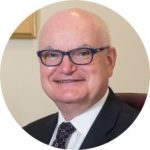 John Marsh, Professor of Optoelectronic Systems University of Glasgow
John Marsh, Professor of Optoelectronic Systems University of Glasgow
Thursday, 13 June 2019
16:00–17:30 | Followed by refreshments
Abstract
Photons underpin our lives, from our ability to see through to our communication systems. While computers are built around electronics, long-haul communications are built around light. Photonic integrated circuits (PICs) are the optoelectronic equivalent of the silicon chips that have revolutionised society over the last 70 years. PIC devices such as lasers, modulators, waveguides, and detectors are widely used in communications, sensing, healthcare and quantum technology. Optical communications represent almost 60% of this market, with PICs currently deployed mainly in the long-haul network. However, because of society’s ever-increasing demands for data, they are migrating rapidly into the office and home. PICs are also key to the next generation of magnetic disk drive technology for use in the cloud. Currently, no other storage technology can meet the cost/performance criteria, but new approaches are needed to increase the storage density. Heat-assisted magnetic recording (HAMR) involves local heating of magnetic media so data can be written at densities above 1 Tbit/in2. By integrating lasers, waveguides and plasmonic antennas, PICs focus enough energy on the disk to raise the local temperature to up to 500 °C within 1 ns. The market for HAMR is expected to be billions of units per annum, a truly exciting volume application for PIC technology.
Biography
John Marsh studied Engineering and Electrical Sciences at Cambridge before pursuing a PhD in compound semiconductors at the University of Sheffield. He moved to the School of Engineering at Glasgow in 1986 where he was appointed Professor in 1996. He is a Fellow of the Royal Academy of Engineering, Royal Society of Edinburgh and IEEE.
Structured light: seeing less to see more in optical microscopy
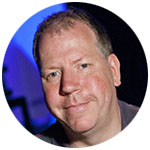 Mark Neil, Professor of Photonics Imperial College London
Mark Neil, Professor of Photonics Imperial College London
Monday, 18 March 2019
16:00–17:15 | Followed by refreshments
Abstract
Optical microscopy techniques can be greatly enhanced from simply imaging what you see in the focus of a microscope objective by structuring the light that you use to illuminate the object. The classic example of this is the confocal microscope where a point illumination is used with a point detector to reject light that comes from outside the focal plane. That technique enables high-contrast, three-dimensional imaging of an object, and can even achieve an improvement in resolution. This talk covers a range of techniques, some wide-field, and some point scanning, but all loosely based on the confocal principle, that can achieve or even better the performance of the classic confocal microscope. While the confocal microscope most benefitted from the invention of the laser, we show how it is developments in optical components, detector technology and computational power that are enabling more recent developments, and opening up new possibilities for applications such as optical data storage.
Biography
Mark Neil studied Natural Sciences at Cambridge before pursuing his PhD in optical information processing at the Engineering Department there. Moving to the Department of Engineering Science at Oxford University he continued his work in optics as a post-doctoral researcher and college lecturer, before joining the Photonics Group in the Physics Department at Imperial in 2002, where he became Professor in 2009.

